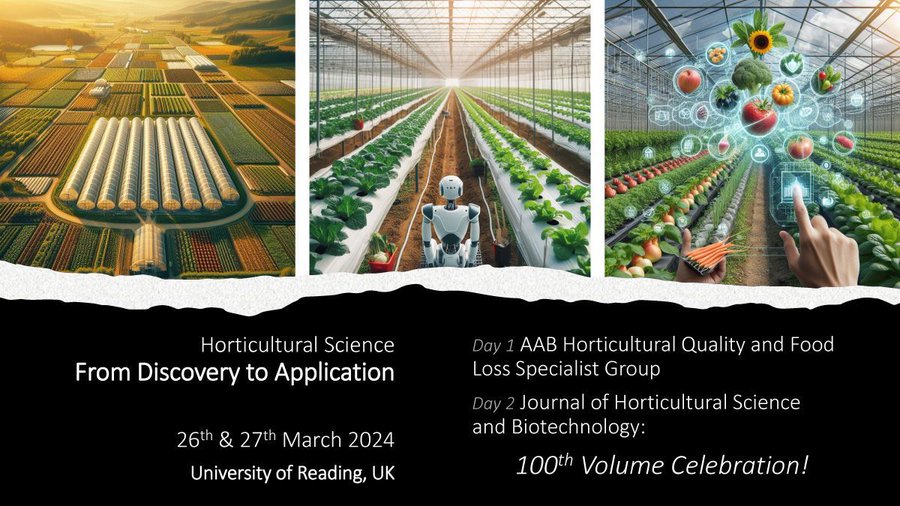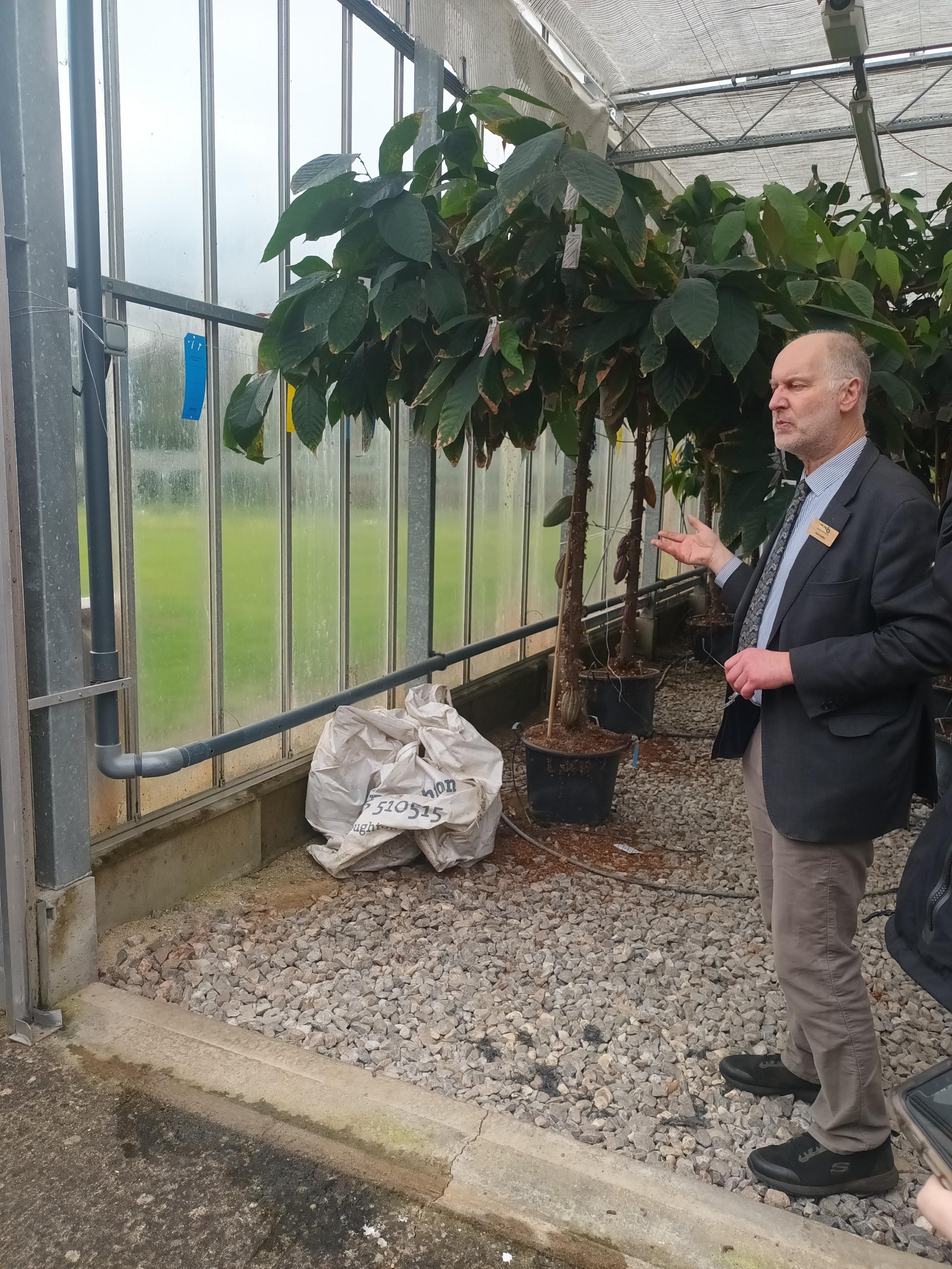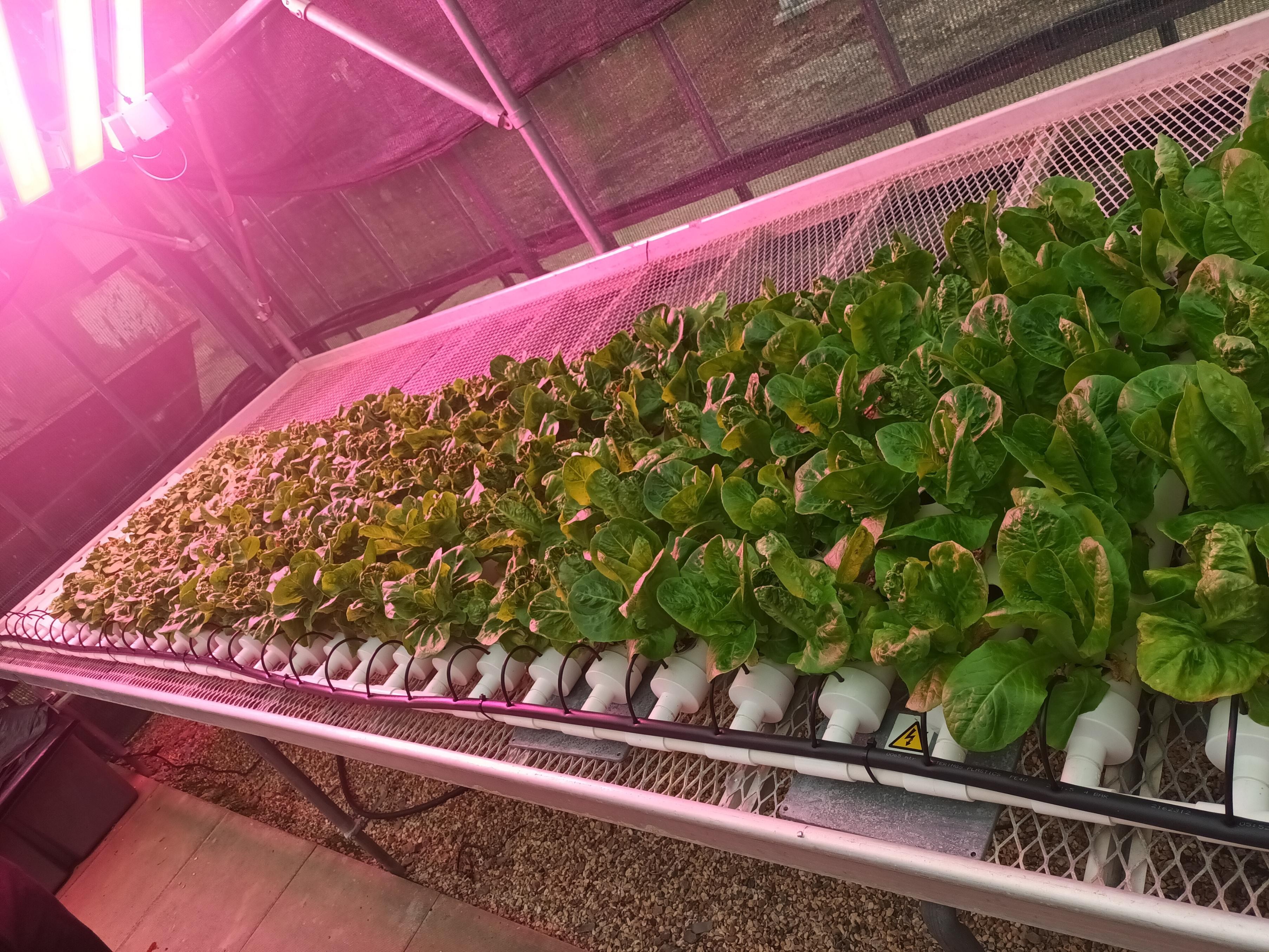Horticultural Science: From Discovery to Application

In March 2024 the Association of Applied Biologists and Journal of Horticultural Science and Biotechnology (JHSB) jointly organised the conference “Horticultural science: from discovery to application” at the University of Reading. This event was in part a celebration of the JHSB preparing to publish its 100th volume in 2025. The hybrid nature of the event enabled a truly international programme with speakers joining to present from Malaysia, India and the Philippines interspersed with those attending in person at Reading. Day one of the conference focused on more specialised research topics relevant to horticulture, with day two taking a broader overview of current challenges and technological opportunities in horticulture.
Talks on day one started with Graham Clarkson of Edward Vinsons Ltd. He provided a valuable industry perspective on the benefits to be gained for horticulture from partnerships between industry and academia, as well as detailing some of the complexities which need to be navigated. Presentations through the rest of the morning covered a wide range of topics, including opportunities for vertical farming in the production of strawberries, novel coatings for fresh produce to reduce post-harvest losses and the growth of tomatoes and strawberries under orange light.
After lunch, in person delegates had a tour of the University of Readings glasshouse facilities. Alongside traditional controlled environment growth cabinets, we also took in more bespoke facilities for studies on day length and light gradients. The tour finished with a visit to the cocoa house, which allows researchers at the University to investigate questions such as how climate change may affect the production of cocoa.
The first session of the afternoon started with a talk from Luke Bell. His research has studied the potential of specific volatile organic chemicals to act as a marker of drought stress in potato plants, which is needed as above ground displays of drought stress (such as plant wilting) occur after the potato tubers have already been damaged. Subsequent talks included studies on carotenoid content in gourds and melons, the potential of biochar to alter soil properties in Oman, and an assessment of the problems with current methods to determine ripeness in mangos that have received chilling treatments.
The final set of afternoon talks had a strong Brassica focus. These included studies on nanoparticle biostimulants, Brassica post-harvest immunity and alternative methods to chilling for post-harvest storage of Brassica. The work of the UK Vegetable Genebank, part of the Warwick Crop Centre, was highlighted by Sarah Trinder, whose talk examined the legacy of the European Clubroot Differential Series, a specialist research collection of Brassicas. The day finished with a talk from Emily Hazell, on developments at Birmingham Botanic Garden to enable more opportunities for collaborative research using the plants in their living collections.
Day two of the conference was opened by Geoff Dixon, Chair of the JHSB with a history of the journal. The day aimed to provide a broad look at the future of horticulture, with three talks focusing on the challenges facing horticulture, and three looking at the opportunities presented by different technologies.
The morning sessions began with Simon Pearson, whose opening talk started with a futuristic vision for AI and robotics within the horticultural industry, before moving on to discuss the present state of such technologies. He was keen emphasise that while robotics in horticulture are developing rapidly, human dexterity skills are still of huge importance to the industry. Next, Joanna Trewern, of ProVeg International, discussed the importance of increasing vegetable consumption as a vital way of tackling the challenges of food and nutrition security, climate change and nature loss. She outlined the many complexities involved in changing both individual behaviour, as well as policy, before providing some encouraging case studies in which change had been achieved. Always thought provoking, Tim Lang provided a high-level assessment of the many challenges facing the horticulture industry. Covering history, geopolitics and macroeconomics, his wide-ranging talk examined the many factors that have led to the present circumstances for horticulture, as well as outlining a number of scenarios which could be the next routes for the industry.
After a JHSB celebratory lunch, Gareth Redmond-King of the Energy and Climate Intelligence Unit gave a sobering reminder of the current state of climate change, and its threats to UK food security. He particularly focussed on UK imports, and the high proportion of food that is imported from low climate resilience countries. He discussed the work of the Energy and Climate Intelligence Unit to use stories of food on the supermarket shelf to connect these complex topics with consumers and the media. Next, Jim Giovannoni provided an overview of the opportunities for crop improvement through genetic diversity. He presented the growing range of tools available to achieve this, with a case study from tomatoes, which his lab has studied over many years. Finally, the day finished on more technological opportunities for horticulture with a talk from Ep Heuvelink, Wageningen University. He provided examples of the way that changing environmental conditions such as lighting placement or frequencies can still have potential for improving crop yields.
The conference provided an excellent overview of the many difficulties facing horticulture in the UK as well as more globally. However, throughout the two days there were also many examples of innovative research seeking to meet these challenges from dedicated researchers studying topics across the whole food system.
Dr Sarah Trinder

Professor Paul Hadley outside the cocoa house ay the University of Reading

A light gradient set up over lettuce in an experimental system at the University of Reading
